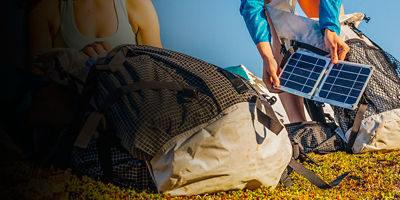
When midwinter days reach their shortest, there is nothing better than a desert escape. Trading cold and gloomy for warm and dry: It’s almost guaranteed that you’ll get a healthy dose of sunshine balanced with dark, starlit nights to recharge on a camping trip to a stunning landscape. Even seasoned campers will find the desert a harsh environment, though, when it comes to exposed heat, remote areas, and limited services. Consequently, you’ll want to be fully prepared for a desert getaway to ensure a safe and enjoyable trip.
Pack Water and Stay Hydrated
Natural water sources in the desert are unreliable at best. Don’t count on anything marked on a map. You’ll need to pack all the water you need for drinking, cooking, and cleaning. One gallon per person per day is generally recommended, though it’s always good to have extra. Drink plenty of water to avoid dehydration or heat stroke.
Prepare for Cold Weather
Even if you’re escaping cold weather, you might be surprised to learn how cold the desert can be at night. Temperatures swing drastically, especially in the winter, and you’ll be glad you brought extra warm layers so you can camp comfortably. Check the forecast before you go and prepare for a range of temperatures.
Find or Create Shade
When the weather and environment don’t offer much respite from the sun—seek out whatever shade you can find in the natural terrain, especially for the hottest part of the day, and orient your tent accordingly so the first light doesn’t wake you. If there’s nothing in the surrounding landscape, make sure to bring a tarp, umbrella, pop-up tent or structure so that you can get a break from the sun’s intensity.
Deal With Dust
The desert is dusty, be prepared to deal. When the wind picks up, dust storms are relatively common. Bring eye protection, where in extreme cases, an old pair of tight-fitting ski goggles will help keep the dust out of your eyes. Protect sensitive electronics in weather-proof cases. Otherwise, don’t forget lip balm, eye drops or allergy meds for dry eyes, plus ever-versatile baby wipes for impromptu hygiene to clean out layers of collected grit and grime.
Prepare Your Vehicle
Most desert locales will be remote and have limited services. Have a spare tire for your car, or better yet, have two good spares. Make sure your vehicle is serviced, topped off with oil and running well. Carry extra fuel if necessary and always keep the gas tank full. As you go more remote, don’t forget to pack extra tools to service the vehicle in a pinch (plus a proper first-aid kit for you and your crew).























